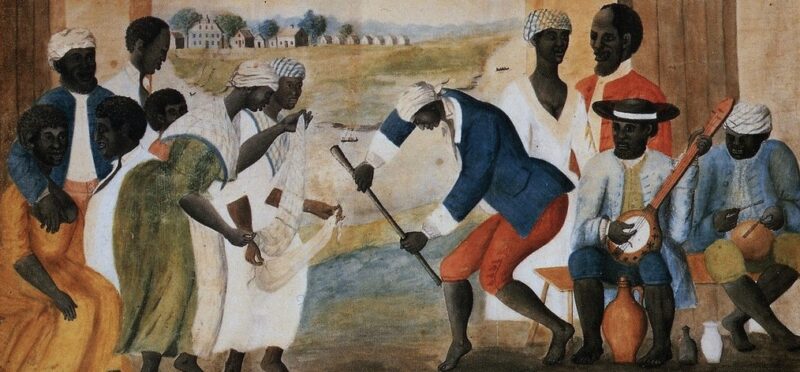Depreciation of assets. Individual productivity analysis. Incentives for performance. These commonplace practices are ingrained in modern business, and popular wisdom holds that they developed as part of the evolution of free-market, free-labor capitalism.
But according to Caitlin Rosenthal, Assistant Professor of History at UC Berkeley, these and other modern business practices were in many cases developed on slave plantations during the 18th and 19th centuries.
“Plantations were more sophisticated than people previously realized,” Rosenthal says. “When we look at the origins of business practices, historians have tended to look at the steam engine and textile factories in New England. These were very important, but we should also be looking at plantations. Some were doing things that were rare in contemporary factories—for example, depreciating slaves and using detailed day-to-day output records for individuals. During that period, it was unusual to see that kind of record.”
Rosenthal stresses that her point is not that slavery had positive benefits, but rather that historians should not turn a blind eye to the reality of how modern capitalism evolved. “There’s a pervasive mythology that says free labor and free markets and capitalism inevitably go together,” she says. “One of the messages of my work is that capitalism can be highly compatible with brutal forms of slave labor. Just using more sophisticated techniques doesn’t mean you have a moral business.”
Rosenthal, who came to UC Berkeley in 2013, first became interested in the history of quantitative management practices during her first job out of college. “I worked as a generalist management consultant, the 21-year-old sitting in the back of the room who makes a big projection that if a company does x, y, and z, it will make 250 million more dollars,” she says. “I loved my time there, but it also raised questions for me about how my calculations could have a huge effect on the lives of people I had never met.”
As a next step, Rosenthal joined the Department of American Studies at Harvard University, where her focus became the study of the history of how today’s corporations evolved. Her chosen window into the past: account books, which she found were numerous and had been vastly underutilized by economists and historians alike. While the minutiae of the day-to-day transactions were mostly irrelevant, she found she could read the account books at a higher level, as maps of the changing meaning of work, productivity, time, and ultimately, people.
Through her research, she discovered that the accounting practices used on large-scale slave plantations in the American South and Caribbean were in many cases novel for their time. Slave overseers working among slaves began to collect information and send it to distant owners, who in many cases lived thousands of miles away. This distance led owners to think of men and women as units of productivity, and variables such as a slave’s age, time, and punishment were added into calculations to maximize profit. At the same time, this process allowed the overseers to distance themselves from the violence of slavery. “Neat columns of lines and numbers defining productivity were covering up this very violent and inhumane system,” Rosenthal says.
Rosenthal is currently working on a book based in part upon her dissertation, “From Memory to Mastery,” which examines how numerical reasoning in America changed between between 1750 and 1880. “Accounting evolved from a system of recordkeeping into an instrument of control and analysis—from an aid to memory to an instrument of mastery,” she writes on her web site. Her book, currently titled From Masters to Managers, further investigates the complex relationship between slavery and capitalism in American history.
“I’m interested in how corporate reports separate people from their workers,” she says. “I look at the distance constructed by numbers, and how much easier it gets to justify all kinds of things when you don’t have to be on the shop floor, you don’t have to encounter people in person, and you only have to encounter them as these quantified units of productivity.”
She hopes that her findings strike a chord with the data-oriented decision-makers who lead companies today. “Numbers work both ways,” Rosenthal says. “On the one hand, they shrink distances and let you see things in huge quantities over a large amount of space. On other hand, when all people have in front of them is a list of numbers, you start to see labor as becoming more commoditized through a series of figures…. People that are crunching numbers [in business today] should step back and think about the bigger story.”



